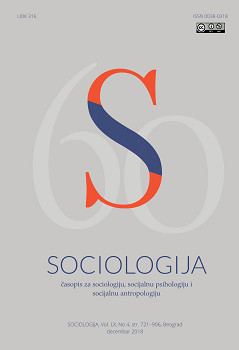Medijske konstrukcije zatvora
Media Representations of the Prison
Author(s): Aleksandar L. Jugović, Dragica R. BogetićSubject(s): Social Sciences, Sociology, Criminology, Studies in violence and power, Health and medicine and law, Social Norms / Social Control
Published by: Sociološko naučno društvo Srbije
Keywords: prison; media; society
Summary/Abstract: The objective of the paper is to scientifically analyze the media’s portrayal of the prison in the social, cultural and historical context. The method used is content analysis. The paper is based on the pluralistic theoretical orientation of the author grounded in the theory of social constructivism. The prison is most commonly depicted as a place occupied by violent and „sinful“ persons where their vicious behaviour continues, sending a message of the prison as an unparalleled and crucial means of social control of individuals not conformed to the norms ofsociety. Media representations of the prison as a total institution range between two typical simplifying images: one, where this total institution (the ‘smug hack’ model) is shown as a system that is corrupted, dehumanized and incapable of conducting resocialization and where prisoners are subjected to sexual assaults, physical torture and discrimination by staff or other prisoners; other, or stereotype about ‘spoiled prisoners’ (the ‘country club corrections’ model) and prisons as places filled with undeserved privileges for criminals – pleasant work, conjugal visits, love rooms, free time filled with hedonism and fun. Typical representations of the prison as a total institution include it representing a place of social revenge, punishment for serious crimes, violence, loss of freedom, systemic torture, identity destruction, repentance, strengthening of criminal habits and convictions („education for crime“) and corruption.
Journal: Sociologija
- Issue Year: 60/2018
- Issue No: 4
- Page Range: 769-787
- Page Count: 19
- Language: Serbian

